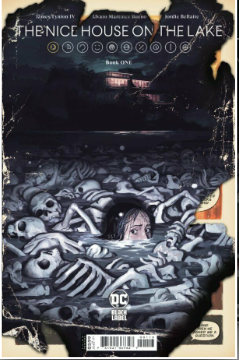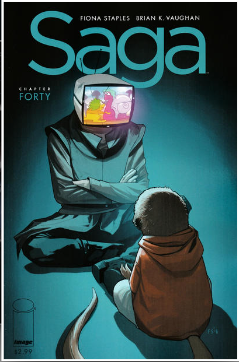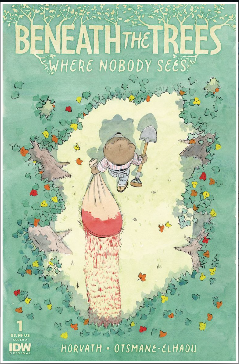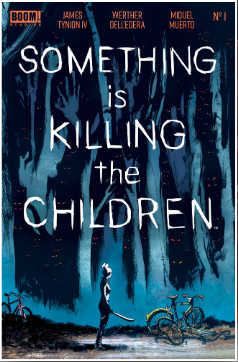Beyond the Big Screen: Why Indie Comics Remain a Smart Investment Even After the Movie




In recent years, indie comics have gained popularity and recognition, partly thanks to movie adaptations that introduce these unique stories to mainstream audiences. Unlike the familiar superhero stories dominating theaters, indie comics offer fresh perspectives, diverse characters, and niche genres that captivate loyal fans. But once a movie adaptation brings a comic into the limelight, is it still worth investing in that comic a few years later, especially if there’s no sequel on the horizon? The answer is yes—indie comics can remain highly investable long after their cinematic debut. Here’s why.
The Cultural Impact of Indie Comics on the Big Screen
Indie comics often tackle stories and themes that the mainstream industry rarely explores, making them particularly valuable to fans looking for something different. When these comics make it to the big screen, they reach audiences who may not have encountered them otherwise. This exposure creates a dedicated following, with fans eager to seek out the original source material, particularly first editions and high-grade copies. Even years later, nostalgia for the movie experience can drive fans back to these comics, turning them into collectible items that resonate deeply with their cultural legacy.
For instance, think of how certain indie adaptations like Scott Pilgrim vs. the World or 300 became cultural touchstones. Though years may have passed since these films’ releases, both the comics and their respective fandoms have remained strong. Many fans hold onto the emotional connection created by the story, leading them to pursue these comics as lasting representations of beloved narratives.
Limited Supply and Lasting Scarcity
A major factor driving the long-term value of indie comics is their scarcity. Unlike mainstream comics, indie titles typically have smaller print runs due to limited budgets and distribution. This natural scarcity means that, even without continuous media hype, these comics retain their value—or even appreciate—as time passes. Limited availability can keep demand high among collectors who appreciate the rarity of indie comics.
Additionally, condition plays a crucial role. High-grade copies, particularly those with certified grading, become even more valuable as years go by. As these comics age, fewer well-preserved copies remain, making those in mint condition highly sought after. For investors, focusing on graded first editions or pristine copies can yield better returns over time, as scarcity continues to drive up value.
The Legacy of Creators and Artistic Talent
The reputation of a comic’s creator can significantly impact its long-term value. Some creators become influential figures within the industry, and as their body of work grows, so does the value of their earlier projects. When an indie comic is adapted into a movie, it’s often a reflection of the creator’s unique storytelling or artistic talent, which resonates with audiences. Fans of the creator’s style often seek out their other works, turning the original comic into a prized collectible.
Moreover, indie comics often feature distinct artistic styles and narratives, unlike the more formulaic mainstream titles. These original artistic elements attract fans who value creativity and are likely to stay interested long after the movie’s release. This appreciation for artistry makes the comic itself an attractive investment, even without follow-up films.
Investment Potential Without a Sequel
While a planned sequel might boost interest, many indie comics thrive as collector’s items even without additional adaptations. Some comics develop a “cult status,” with dedicated fan communities that keep them relevant through online forums, social media, and conventions. These communities support ongoing interest, and the comic’s significance can grow over time.
Additionally, even if no sequels are planned, reboots and anniversary editions are common ways to renew interest in a story. When publishers release special reprints, this can reignite demand for original editions, which remain the most valuable versions in the collector’s market. Also, a popular comic may still become a franchise down the line, with spin-offs, animated adaptations, or even a reboot if fan interest remains strong.
Practical Tips for Investing in Indie Comics Post-Movie
For those interested in investing, here are some practical steps to maximize the potential value of an indie comic after a movie adaptation:
- Seek Out First Editions: First editions tend to hold the most value, especially those printed before the comic gained widespread attention. These editions are considered authentic collector’s items and are typically the most sought-after.
- Focus on High-Grade Copies: Condition is crucial. Certified high-grade copies, especially those with CGC ratings of 9.8 or higher, have a higher chance of appreciating over time. Given the natural scarcity of indie comics, mint-condition copies are rarer and more valuable.
- Follow the Creator’s Career: Pay attention to the creator’s career trajectory. If the creator becomes more influential or produces more widely known works, it can increase interest in their previous projects, driving up the value of earlier comics.
Conclusion
Indie comics offer a unique and exciting avenue for collectors and investors alike, especially when a movie adaptation brings them into the spotlight. The small print runs, distinct artistic styles, and passionate fanbases make these comics valuable beyond the typical movie hype. So, if you’re considering indie comics for long-term investment, remember: the story doesn’t end when the credits roll. Often, that’s just the beginning of their journey as cherished collectibles.
- The Mark Spears Monsters Series: Why It’s Captivating Fans
- Top 15 List of Comics Submitted to CGC for Grading (Week of January 7th, 2025)
- Have Comics Lost Their Magic? Golden Age vs. Modern Comics
- Top 10 Unbelievable Comic Book Cameos Featuring Donald Trump
- Comics are More Than Just Paper: Why First Editions Are Gold
Leave a Reply